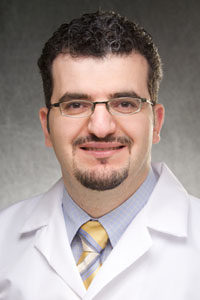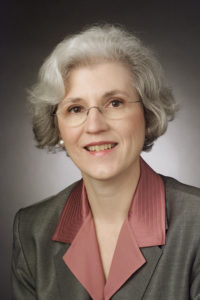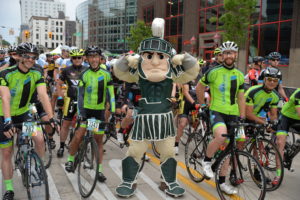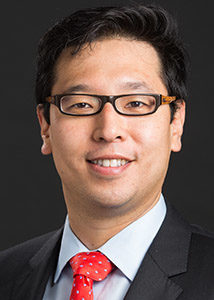May 7, 2017:
The skin protects against heat, sunlight, injury, and infection. Skin also helps control body temperature and stores water and fat. Skin cancer is the most common type of cancer. It usually forms in skin that has been exposed to sunlight, but can occur anywhere on the body.
Skin has several layers. According to the National Cancer Institute, skin cancer begins in the epidermis (outer layer), which is made up of squamous cells, basal cells, and melanocytes. You can learn more about skin cancer, including melanoma, from the National Cancer Institute.
May is Skin Cancer Detection and Prevention Month. This month, the members of the Big Ten Cancer Research Consortium are raising awareness about strategies for preventing skin cancer, spearheading promising research, and even cycling to raise money for skin cancer research!
UI clinician spearheading promising melanoma immunotherapy treatment

Yousef Zakharia, MD Clinical Assistant Professor of Internal Medicine – Hematology, Oncology and Blood and Marrow Transplantation
Holden Comprehensive Cancer Center researcher Yousef Zakharia, MD, has presented promising data at a national meeting about combining a new investigational immunotherapy drug with an FDA-approved immunotherapy drug to treat patients with advanced melanoma.
The two drugs, indoximod and pembrolizumab, are both immunotherapy treatments which help activate the patient’s immune system to better fight cancer. Pembrolizumab (Keytruda) is an FDA-approved treatment for patients with advanced melanoma. In phase 3 clinical trial, this drug on its own produced partial or complete shrinking of tumors in 33 percent of patients involved in the trial.
“We set out to investigate whether we could improve upon this response rate by adding an inhibitor of the IDO pathway to pembrolizumab treatment,” says Zakharia, clinical assistant professor of internal medicine with University of Iowa Health Care.
Inhibiting TERT Shows Promise for Patients with Rare Type of Melanoma

Jeffrey A. Sosman, MD, Medical Oncology
Jeffrey Sosman, MD, an internationally recognized melanoma expert, is co-senior author of a study demonstrating a significant genetic association linked to an aggressive form of melanoma published April 3, 2017 in the journal Genome Research. Sosman is Co-Leader of the Translational Research in Solid Tumors Program and Director of the Multidisciplinary Melanoma Program at the Robert H. Lurie Comprehensive Cancer Center of Northwestern University and Professor of Medicine in the Division of Hematology and Oncology at the Feinberg School of Medicine.
Acral lentiginous melanoma, or ALM, is an uncommon type of melanoma that typically occurs on the palms and soles and is often difficult to treat. Investigators identified a protein target that opens a window into the disease and may aid in diagnosis and, one day, lead to improved treatments. The researchers sequenced samples from 34 patients with ALM and found significant evidence that inhibiting a protein called TERT may be “an effective approach” to destroying ALM cells. In laboratory experiments, more than 75 percent of ALM cancer cells were affected, following 72 hours of exposure to a drug that inhibits TERT.
“These data establish a foundation for understanding ALM’s genetic triggers, with the ultimate goal to inform ALM clinical management for patients,” said Sosman. Continued characterization of ALM, and evaluation of the functional implications of TERT aberrations, holds promise for paving an avenue towards improving outcomes for ALM patients,” the paper concludes.
Partners Play Critical Role in Melanoma Exams
Having to strip down regularly to have your partner check for mole irregularities may be initially

June K Robinson, MD
Research Professor of Dermatology
embarrassing to someone previously diagnosed with melanoma.
But a new study led by June Robinson, MD, shows the benefits of a partner frequently checking for troublesome moles based on training to do so far outweigh the embarrassment. Robinson is a member of the Robert H. Lurie Comprehensive Cancer Center of Northwestern University and Research Professor of Dermatology at the Feinberg School of Medicine.
Study participants who received skin examination training caught far more mole irregularities than those in the control group. They also grew more confident performing the examinations. “We found as long as the benefit is strong enough, it overcomes whatever potential embarrassment there might be between the partners,” said Robinson.
Partners of patients who had been previously diagnosed with early stages of melanoma performed frequent skin self- examinations (SSEs) on the patient over the course of the two-year study. As the study progressed, a partners’ confidence in his or her ability to find irregular moles increased, as did the trust in one another to successfully identify the irregularities. The study was published in JAMA Dermatology.
Participants were asked every four months to indicate on a five-point scale how much they agreed or disagreed with the following two statements: ?“It is very embarrassing to have my partner help examine my skin,” and “I ?am very comfortable having my partner help examine my skin.” Based on their responses, melanoma patients and their partners eventually had no problems being checked for irregular moles by their partners, Robinson said.
Robinson’s study received a four-year renewal, allowing her to continue following the participants and checking in every four months on their progress and levels of embarrassment, comfort and confidence with partner-assisted SSEs.
Cycling to Fight Skin Cancer
The first time Mike Hoekstra rode his bike in the Michigan State University College of Human Medicine Gran Fondo, raising money for skin cancer research wasn’t foremost in his mind.
“I’ll admit that part wasn’t important to me,” he said. “Truth be told, it was more for the ride.”
In the years since, the MSU Gran Fondo (Italian for “big ride”) has taken on greater significance for him than a pleasant pedal through the countryside. That’s because in August of 2014, two months after his first Gran Fondo, Hoekstra was diagnosed with basal cell carcinoma, a form of skin cancer.
 Now that he’s training for the fifth annual MSU Gran Fondo, scheduled for June 24 in Grand Rapids, “the fundraising is more important than the ride,” he said. “I feel really good about it. My nature is to be more reserved, but I’ve really opened up about it. I’m not afraid to ask people for donations.”
Now that he’s training for the fifth annual MSU Gran Fondo, scheduled for June 24 in Grand Rapids, “the fundraising is more important than the ride,” he said. “I feel really good about it. My nature is to be more reserved, but I’ve really opened up about it. I’m not afraid to ask people for donations.”
He knows that in soliciting pledges he’s helping fund the Michigan State University College of Human Medicine’s research into better treatments and possible cures for skin cancer, including melanoma, one of the most dangerous forms. That includes the promising work led by Richard Neubig, MD, PhD, into a new drug that appears to reduce the spread of melanoma cells by up to 90 percent.
When diagnosed early, melanoma is highly curable, but when the cancer spreads, or metastasizes, it becomes much harder to treat and often is fatal. If caught early, the chance of death from melanoma is about two percent, Neubig said, a risk that rises to 84 percent when detected late.
“We’ve identified a pathway that’s very important in melanoma metastasis, and we’ve figured out a way to turn off that pathway,” said Neubig, professor and chair of the Michigan State University Department of Pharmacology and Toxicology.
His study focused on a protein called RhoC that, when activated, is a key in the signaling pathway that causes melanoma to aggressively spread in the body. The compound he and his collaborators have been studying helps prevent metastasis by interrupting the RhoC signaling pathway and preventing the spread of melanoma.
Much of Neubig’s research has been into improving treatments for scleroderma, a rare and often fatal autoimmune disease that causes the hardening of skin tissue and other organs in the body. Originally, he was studying the new compound as a possible treatment for scleroderma and then found that it works effectively in blocking the spread of melanoma. His latest findings about the new compound were published in the January issue of Molecular Cancer Therapeutics.
The study was funded in part by the National Institutes of Health. Money raised by Gran Fondo participants also “has helped us a lot with our work,” said Neubig, who, himself, has ridden in the annual event. 
In its first four years, the MSU Gran Fondo raised more than $640,000 for skin cancer research. That’s gratifying news for Mike Hoekstra. While his basal cell carcinoma is a highly curable form of skin cancer, just hearing that he had cancer was a shock. It began when he noticed what he at first thought was a pimple on his forehead. When it didn’t heal, he went to his primary care physician, who referred him to a dermatologist. A biopsy came back positive for basal cell carcinoma.
“I don’t remember most of the conversation after that,” said Hoekstra, 42. “I’m thinking that I’m the primary provider for my wife and my kids. I was thinking of supporting them and watching them grow.”
The dermatologist surgically removed the carcinoma, and Hoekstra has been cancer free since then, although he knows he is at greater risk for reoccurrence. He’s now more careful to apply sunscreen when outdoors, and he makes certain his wife and kids do, too.
The first time he rode in the MSU Gran Fondo, Hoekstra, a University of Michigan graduate, proudly wore a UM jersey. Sports rivalries aside, he knows that MSU and UM researchers collaborate when it comes to cancer research.
The first three years he rode, Hoekstra raised about $2,000. So far this year, he’s gathered pledges of $485 toward his goal of $1,500. He again plans on riding 80 miles, the longest of four routes, while his wife, Stephanie, and their older son, Henry, 7, will ride the 12-mile loop.
“It’s a great cause, and it’s important work that they’re doing,” Hoekstra said. “What I often say to people is that there are so many great causes out there.”
The MSU Gran Fondo is one of them, he said.
“The results are coming in because of that ride,” he said. “I think that’s really awesome. I’m glad I could help out.”
Learn more about this year’s Gran Fondo.
Jaehyuk Choi Receives Prestigious Doris Duke-Damon Runyon Clinical Investigator Award
Jaehyuk Choi, MD, PhD, assistant professor in dermatology and biochemistry and molecular genetics at

Jaehyuk Choi, MD, PhD
Northwestern University Feinberg School of Medicine and a member of the Robert H. Lurie Comprehensive Cancer Center of Northwestern University, is one of seven scientists chosen as a 2016 recipient of the Damon Runyon Cancer Research Foundation’s prestigious Clinical Investigator Award.
Choi, who was named the Doris Duke- Damon Runyon Clinical Investigator, will receive a $450,000 grant over three years from the Damon Runyon Cancer Research Foundation. The award funds outstanding early career physician-scientists conducting patient-oriented cancer research at major research centers under the mentorship of the nation’s leading scientists and clinicians.
Choi’s project is titled, “Identification of genetic basis of altered T cell receptor signaling in cutaneous T cell lymphoma.” Cutaneous T cell lymphoma (CTCL) is an incurable cancer of the immune T cells in the skin. In advanced disease, the cells escape into the blood, the lymph nodes, and at times the visceral organs. Patients with advanced disease eventually succumb to a combination of tumor burden and disease-related immunosuppression.
Dr. Mark answers questions on how to best protect your skin

Lawrence Mark, M.D., Ph.D.
With the days growing longer and the temperatures rising, Hoosiers are spending more time outdoors. And May, which is Skin Cancer Detection and Prevention Month, is a good time to refresh memories about protection from the sun. Lawrence A. Mark, M.D., Ph.D., an assistant professor of dermatology at the Indiana University School of Medicine and a physician-researcher at the Indiana University Melvin and Bren Simon Cancer Center, answered some questions about skin cancer and how to best protect oneself.
I know I’m supposed to wear a hat and long-sleeves, but when it gets terribly hot and humid that doesn’t seem very practical. What can or should I do?
Dr. Mark: First off, staying in the shade during the peak sun hours of the day is helpful. There are also multiple clothiers that make highly breathable fabrics that allow you to stay cool despite long-sleeves and also contain ultraviolet protective additives (UPF) that block UV rays.
What if I wear clothes that are made with UPF? Do I still need to slather on sunscreen?
Dr. Mark: I would still cover up with sunscreen on areas that don’t get covered by the protective clothing.
What are the best ways that I can protect my skin?
Dr. Mark: Wear appropriate clothing that particularly helps cover cosmetically sensitive areas such as the face, ears, and nose — also known as a hat. Also cover up skin that only gets strong exposures of UV once in a while, such as your back, belly, and legs. Wear sunscreen on areas that you cannot cover such as the backs of the hands and back of the neck. Also, avoid the peak hours of UV exposure when the sun is at its strongest, between 10 a.m. and 2 p.m.
I’m confused by all of the SPFs (Sun Protection Factors) I see listed on products. How can I decide which SPF offers the best protection?
Dr. Mark: A daily moisturizer with SPF 15 or better would be reasonable. If you know you will be getting more prolonged exposures, an SPF of 30 or higher is better. Whatever sunscreen you use should state on the bottle that it is “broad-spectrum,” which means that it covers both the UVA and UVB portions of sunlight.
What are researchers such as yourself learning about skin cancer?
Dr. Mark: We are making advances in therapy for aggressive and unresectable (unable to be removed with surgery) melanoma, squamous cell carcinoma, and basal cell carcinoma, but it has been a long and hard struggle to treat them because there are so many diverse changes that can happen to their genetics and cellular functions when they go awry. So your best chance of doing well is to first prevent them from occurring by using the guidelines above or having them found early when they are still surgically removable.
Have You Joined the Fight Against Cancer?
![]() Did you know you can directly support the team efforts of the Big Ten Cancer Research Consortium? Make a gift today!
Did you know you can directly support the team efforts of the Big Ten Cancer Research Consortium? Make a gift today!
This story was compiled by Alecia Burkhardt, communications associate for the Big Ten Cancer Research Consortium, with contributions from the University of Iowa Holden Comprehensive Cancer Center, Robert H. Lurie Comprehensive Cancer Center of Northwestern University, Michigan State University Breslin Cancer Center, and Indiana University Melvin and Bren Simon Cancer Center.
About the Big Ten Cancer Research Consortium: The Big Ten Cancer Research Consortium was created in 2013 to transform the conduct of cancer research through collaborative, hypothesis-driven, highly translational oncology trials that leverage the scientific and clinical expertise of Big Ten universities. The goal of the Big Ten Cancer Research Consortium is to create a unique team-research culture to drive science rapidly from ideas to new approaches to cancer treatment. Within this innovative environment, today’s research leaders collaborate with and mentor the research leaders of tomorrow with the unified goal of improving the lives of all patients with cancer.
About the Big Ten Conference: The Big Ten Conference is an association of world-class universities whose member institutions share a common mission of research, graduate, professional and undergraduate teaching and public service. Founded in 1896, the Big Ten has sustained a comprehensive set of shared practices and policies that enforce the priority of academics in the lives of students competing in intercollegiate athletics and emphasize the values of integrity, fairness and competitiveness. The broad-based programs of the 14 Big Ten institutions will provide over $200 million in direct financial support to almost 9,500 students for more than 11,000 participation opportunities on 350 teams in 42 different sports. The Big Ten sponsors 28 official conference sports, 14 for men and 14 for women, including the addition of men’s ice hockey and men’s and women’s lacrosse since 2013. For more information, visit http://www.bigten.org/.
















Subscribe to the Big Ten CRC Newsletter X
X Facebook
Facebook YouTube
YouTube